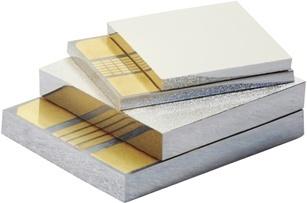Aircraft maintenance will be easier in future, with sensors monitoring the aircraft skin. If they discover any dents or cracks they will send a radio message to a monitoring unit. The energy needed for this will be obtained from temperature difference.
If a bird collides with a plane the consequences can be fatal, not only for the creature itself. The impact can deform the structure of the aircraft fuselage, causing stresses in the material which can later turn into cracks. In future, sensors in the aircraft skin will detect such damage at an early stage and simplify maintenance and repair work. The sensors are light – they don’t need any cables or batteries. They draw their energy from the temperature difference between the outside air (about minus 20 to minus 50 degrees Celsius) and the passenger cabin (about 20 degrees Celsius). Because there are no batteries to change, the sensors can be located at inaccessible places on the aircraft.
Enabling the system
EADS Innovation Works heads the development consortium. Researchers at the Fraunhofer Institute for Physical Measurement Techniques IPM in Freiburg are developing the energy supply system for the sensors.
“We use thermoelectric generators, developed in cooperation with Micropelt GmbH, and adapt them so that they work efficiently,” explains Dr. Dirk Ebling, scientist at the IPM. Thermoelectric materials are semiconductors which generate electric power under the influence of a temperature difference. If a number of these thermoelectric elements are connected in series, enough energy is produced to power small sensors as well as a radio device transmitting the measurement results to a central unit.
“We are also optimising the heat flow,” the research scientist continues. A key question is how to couple the thermoelectric generator to the warm and cold environments so that it transports enough heat. To obtain the answer the scientists set up a climate chamber in which the temperature profile of the aircraft fuselage is simulated. The first optimised prototypes have already been built. Development of a prototype of the entire system including the sensor, thermoelectric generator, energy storage device, charging electronics and signal transmission module is scheduled for completion in about three years’ time, hopefully enabling the system to enter series production.
The applications for energy-autonomous sensors are numerous. In automobiles they could help to reduce weight by removing the need for heavy cable assemblies. They would also be useful in old buildings, where they could be easily affixed to walls e.g. to monitor dampness. Their use in the medical sector is feasible too. A sensor system integrated in a running shirt could monitor an athlete’s pulse during training, and hearing aids could obtain their energy from body heat.





















